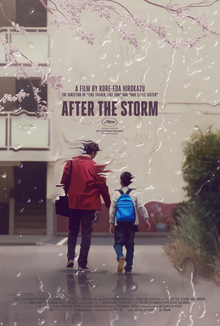Kevin Drum happens to look into opposition to the Green New Deal – from liberals and their allies:
San Bernardino County is really big and really sunny. It’s a great place for solar energy farms. But not everyone is thrilled about that:
The county’s Board of Supervisors is slated to vote Thursday on a policy that would prohibit large renewable energy projects on much of the unincorporated private land governed by the county….Renewable energy has been a source of tension in California’s deserts for years, with nearly all large solar and wind projects facing opposition from unhappy local landowners, environmental groups or both.
Hmmm. Environmental groups. Then there’s this:
After signing onto the Green New Deal as an original sponsor, one House Democrat…said he faced harsh criticism from building trade representatives who worried the plan would put their members out of work….Unions, a key constituency, have been less than enthused by — and in some cases, downright hostile to — the ambitious proposal to tackle climate change. Terry O’Sullivan, the general president of the Laborers’ International Union of North America, or LIUNA, denounced the Green New Deal the day it was introduced.
I think Kevin is, consciously or not, highlighting that so long as we see ourselves as collection of free agents, fighting to see who’ll be winners and who’ll be losers in the decarbonisation of national and international economies, we are going to have a very hard time accomplishing the goal of retaining a world-wide environment in which humanity can continue to flourish. This sort of lack of leadership will inflict unwarranted damage on those unable to defend themselves, and while the rich may think they’ve done well in the end, the truth of the matter is that they are making enemies which will carry not only personal grudges, but systemic grudges: they’ll perceive, rightly or wrongly, that the prevailing economic order is at fault, and that’ll doom the rich and their successors, metaphorically and probably physically.
We need leadership that will try to distribute the pain in equal parts, and communicate that goal to everyone. I’ve talked about this before in terms of the coal industry, where I suggested that everyone involved in this doomed industry be, well, bought out is probably a good term for it. In other words, doomed industries shouldn’t mean doomed families; burdens should be shared. Not set up for life, but given a second chance. Unfortunately, when it comes to climate change, our leadership in Washington is delusional, fluctuating between chants of Chinese hoaxing and the celebrations of the End Timers. Those who should be leading, at least on the Republican side, can’t be bothered to even admit there’s a problem that can be dealt with.
 But the concern about the loss of jobs expressed by the union leader in Kevin’s post can be dealt with while working on the decarbonization problem. Renewable energy fans have been talking this up for years, but Andrew Sullivan touches on it in passing in his support for the semi-despised nuclear energy, present in this first section of his weekly tri-partite diary:
But the concern about the loss of jobs expressed by the union leader in Kevin’s post can be dealt with while working on the decarbonization problem. Renewable energy fans have been talking this up for years, but Andrew Sullivan touches on it in passing in his support for the semi-despised nuclear energy, present in this first section of his weekly tri-partite diary:
Focus on a non-carbon energy source that is already proven to be technologically feasible, can be quickly scaled up, and can potentially meet all our energy demands. What we need, given how little time we have, is a massive nuclear energy program. Sure, we can keep innovating and investing in renewables, and use as much as we can. But they are not going to save us or the planet in time. We know nuclear works and does so quickly. As argued in Scientific American:
The speediest drop in greenhouse gas pollution on record occurred in France in the 1970s and ‘80s, when that country transitioned from burning fossil fuels to nuclear fission for electricity, lowering its greenhouse emissions by roughly 2 percent per year. The world needs to drop its global warming pollution by 6 percent annually to avoid “dangerous” climate change in the estimation of [respected climate scientist James] Hansen and his co-authors in a recent paper in PLoS One.
What’s the catch? It’s superexpensive. While the price of renewables keeps falling, nuclear remains very costly. The plants take a long time to build, and they’re difficult to site. One estimate is that it would cost $7 trillion to build a thousand nuclear plants, which would allow us to get a quarter of our energy from this non-carbon source. For the U.S. to get half its energy from nuclear would cost around $14 trillion. But if we committed to a huge nuclear investment, and the innovation that comes with it, that cost would come down. Compared with one estimate of $93 trillion for the Green New Deal, it’s a bargain. And remember most of the cost of nuclear power is up-front.
Sullivan’s sources are somewhat older than I’d like, but I suppose the numbers haven’t changed much since they were published. But think about building a thousand nuclear power plants – that’d eat up a lot of construction labor and probably scrabble around, looking for more. In fact, I have to wonder if the price to standup a nuclear power plant would go up simply because of the demand for experienced construction personnel. I have similar concerns about operational and mining personnel as well. The nuclear industry has been withering for decades, and that means a sudden turnaround could put unexpected strains on Human Resources.
But it’s worthwhile noting, as does Sullivan, that leading environmentalists have endorsed nuclear power in the past. He also points at this very recent article in Quillette by Michael Shellenberger, who we’ve puzzled over before:
I used to think that dealing with climate change was going to be expensive. But I could no longer believe this after looking at Germany and France.
Germany’s carbon emissions have been flat since 2009, despite an investment of $580 billion by 2025 in a renewables-heavy electrical grid, a 50 percent rise in electricity cost.
Meanwhile, France produces one-tenth the carbon emissions per unit of electricity as Germany and pays little more than halffor its electricity. How? Through nuclear power.
Then, under pressure from Germany, France spent $33 billionon renewables, over the last decade. What was the result? A rise in the carbon intensity of its electricity supply, and higher electricity prices, too.
What about all the headlines about expensive nuclear and cheap solar and wind? They are largely an illusion resulting from the fact that 70 to 80 percent of the costs of building nuclear plants are up-front, whereas the costs given for solar and wind don’t include the high cost of transmission lines, new dams, or other forms of battery.
Comparing prices can be difficult without controlling for government subsidies, geographical oddities, etc, and it’s not clear if Shellenberger has done so or not. Carbon intensity, on the other hand, is a scientific measure that should be mostly independent of such factors, so it’s a little dismaying to see someone say that carbon intensity is not dropping despite oncoming investment. It’s a good article that is worth a read.
I’ve never been on the anti-nuclear bandwagon, so it’s not hard for me to think of it in positive terms. Of course, cost overruns (here’s a recent debacle) and the potential for disaster if run by corner-cutters is always a concern – but a little easier to swallow if you consider our fossil-fuel energy suppliers have each been disasters that happen to span decades, rather than occurring in a few minutes.
But, if you believe Shellenberger, and I believe that someone with more time on their hands than I could fact-check him and come up with mostly positive results, even “green energy” will impact the environment in ways unacceptable to environmentalists. Nuclear power, properly managed, may have the capacity to save nature; improperly managed, destroy it.
But the alternative may turn out to be a drastic reduction in human population, and that is, to use one of those juiceless words, unpalatable. If you’re solidly anti-nuclear, consider the lack of progress on carbon intensity per unit of energy that he observes, and then try on horrific, terrifying, and appalling. Then go back to looking at nuclear energy. It’s an interesting exercise. You may not change your mind, but you might be a trifle less certain of your rectitude.











 When it comes to
When it comes to  The story may lay the blame on the Sun in
The story may lay the blame on the Sun in 

 A short while back, I remarked that there’s a class of movies I
A short while back, I remarked that there’s a class of movies I  Why would a woman’s biggest fear be having sex with a giant caterpillar?
Why would a woman’s biggest fear be having sex with a giant caterpillar?


 But the concern about the loss of jobs expressed by the union leader in Kevin’s post can be dealt with while working on the decarbonization problem. Renewable energy fans have been talking this up for years, but Andrew Sullivan touches on it in passing in his support for the semi-despised nuclear energy, present in this first section of his
But the concern about the loss of jobs expressed by the union leader in Kevin’s post can be dealt with while working on the decarbonization problem. Renewable energy fans have been talking this up for years, but Andrew Sullivan touches on it in passing in his support for the semi-despised nuclear energy, present in this first section of his 



